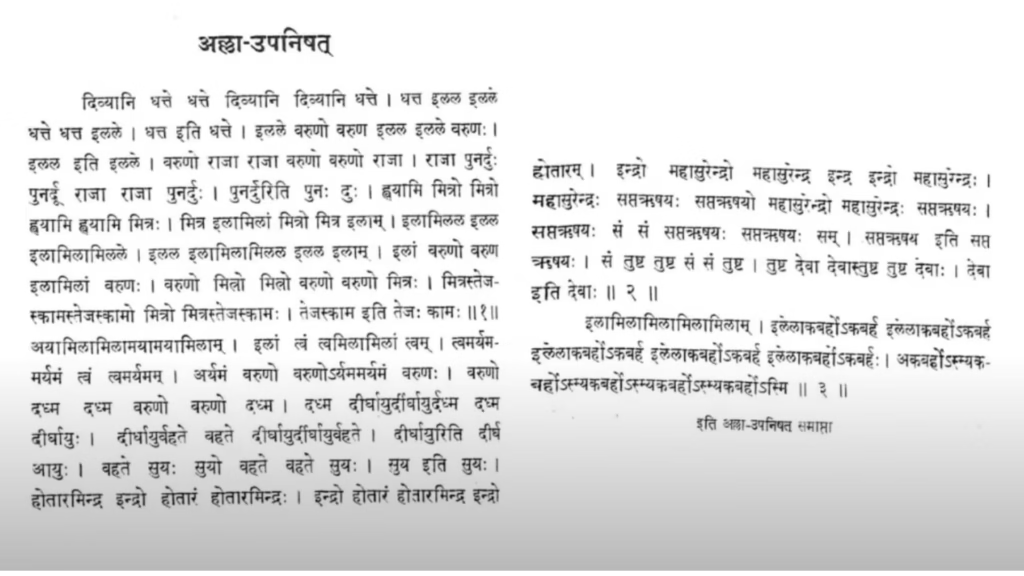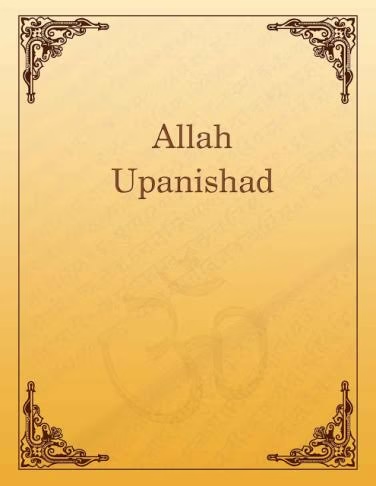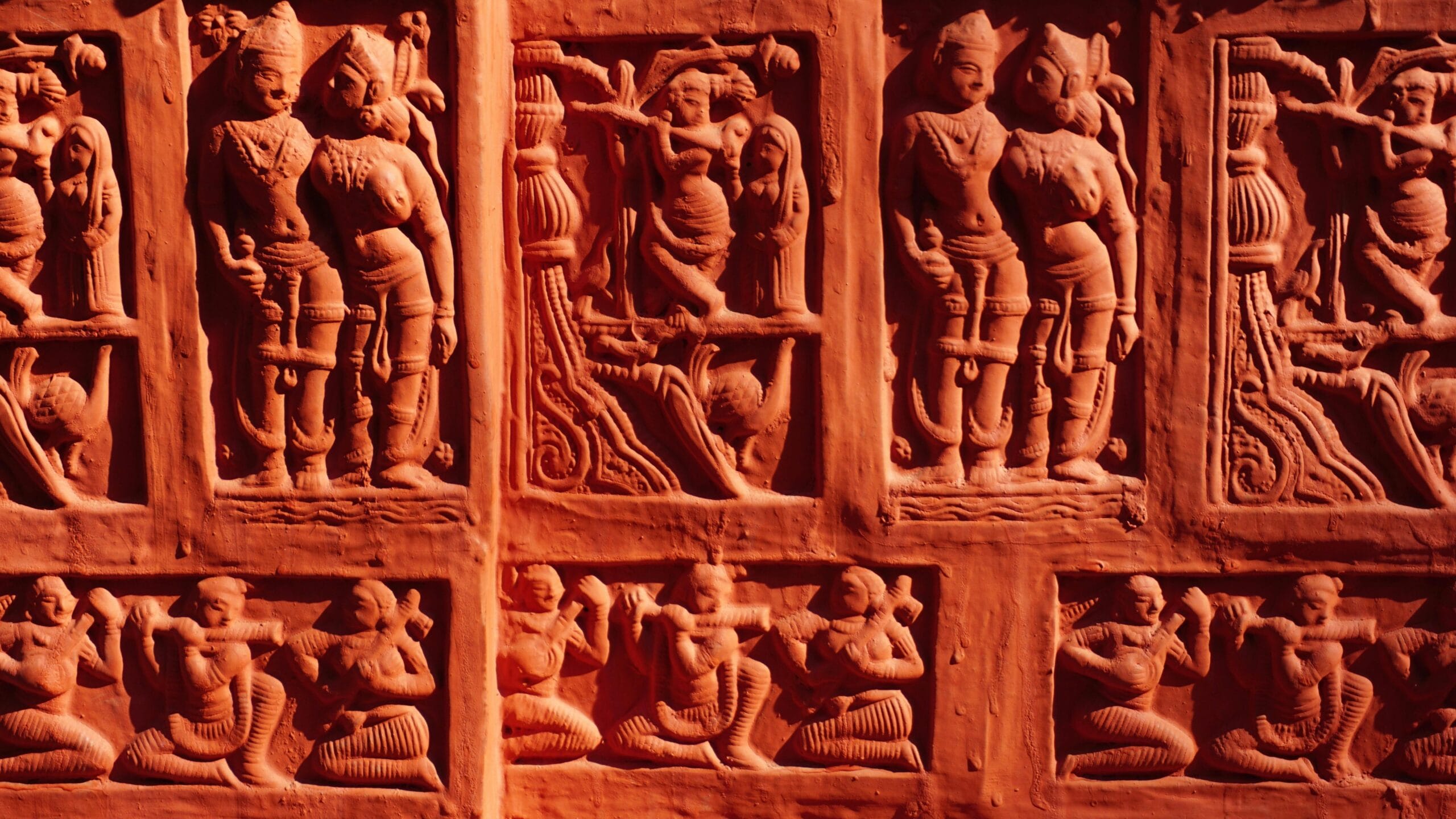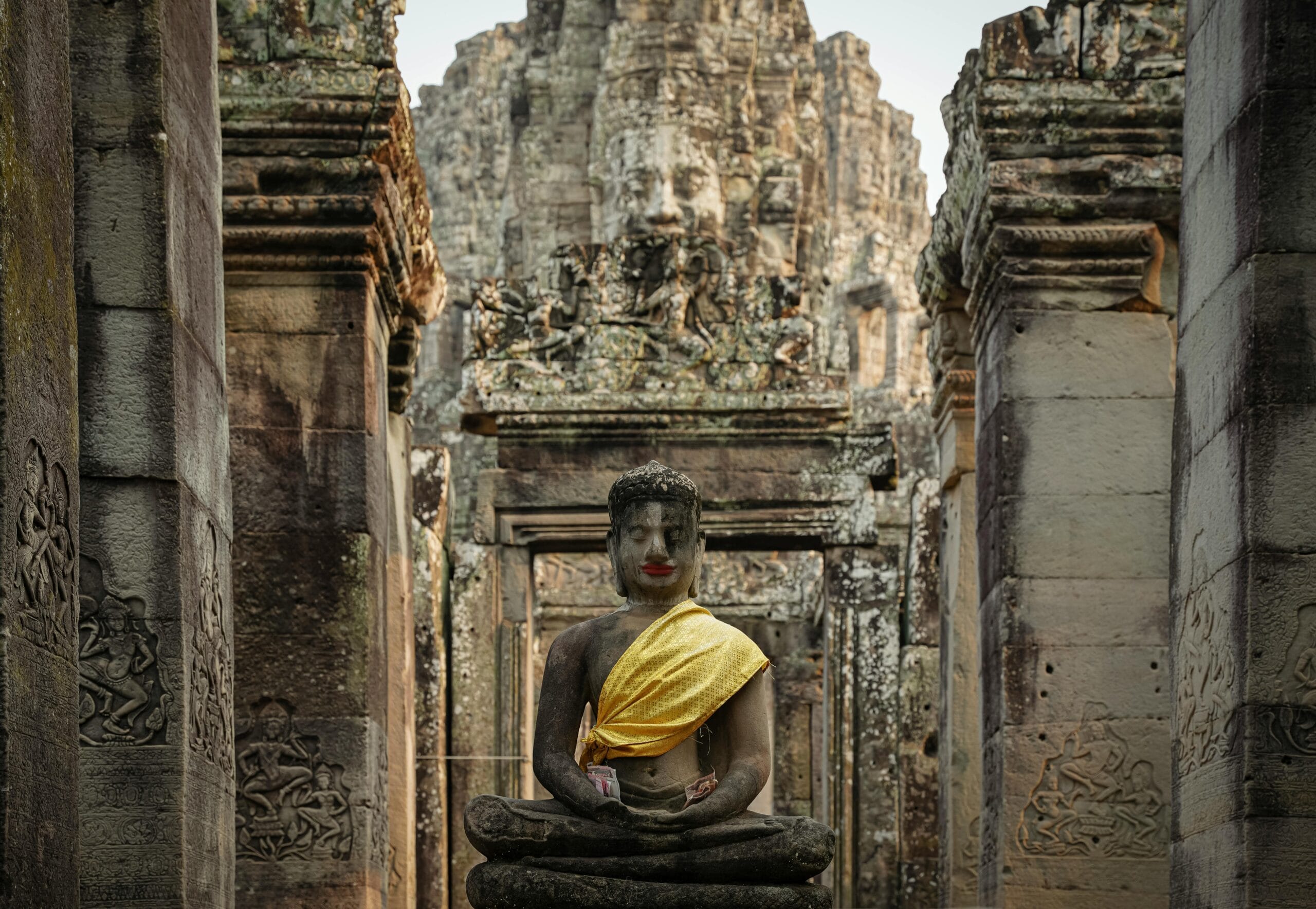Is there a hidden history of religious syncretism in India? The Allah Upanishad, a relatively unknown text, offers a provocative glimpse into a time when Hindu scholars were purportedly incorporating Islamic elements into their philosophical writings. Consider it a cultural bridge, or a forced merger? This article explores the Allah Upanishad, its historical context, and the questions it raises about religious identity and cultural exchange in India.
Table of Contents
What is an Upanishad?
Sitting Near a Teacher
The term “Upanishad” literally means “to sit near,” referring to the practice of students learning from their gurus in a close, intimate setting. These texts are foundational to Vedanta, the philosophical system that interprets the Vedas. While numerous Upanishads exist, only a select few are considered the oldest and most important.
The Core Upanishads
Out of the many Upanishads, only 12 are considered main, with the first five being the oldest. The authenticity and dating of Upanishads are subjects of debate, with some arguing for their ancient origins, even predating the Buddha.
The Allah Upanishad: An Anomaly?
A Mughal-Era Text?
The Allah Upanishad stands apart from the traditional Upanishads. Unlike the ancient texts associated with the Vedas, the Allah Upanishad appears to have been composed during the Mughal period (16th-18th century). This raises immediate questions about its authenticity and purpose. If the Upanishads are meant to reveal the ultimate truth, does the Allah Upanishad suggest that truth can be found in unexpected places?
Why an Upanishad to Allah?
The central question is: why would Hindu scholars, steeped in the tradition of the Vedas and Upanishads, write a text dedicated to Allah? Some theories suggest it was an attempt to appease the Mughal rulers or to find common ground between Hinduism and Islam.
Historical Context: Religious Syncretism and Political Patronage
The Mughal Court and Intellectuals
During the Mughal era, intellectuals often sought patronage from the ruling elite. This could lead to the creation of works that were favorable to the rulers or that attempted to bridge cultural and religious divides.
Chandrabhan Brahman: A Case Study
Chandrabhan Brahman, a Lahore-born scholar in the Mughal court, exemplifies this trend. His writings, as detailed in “Writing Self, Writing Empire” by Rajeev Kinra, showcase a Brahman deeply immersed in Persian culture and praising Mughal emperors and court officials. Brahmans are the traditional interpreters and custodians of Hindu scriptures.
Rajeev Kinra writes in “Writing Self, Writing Empire” that Chandrabhan was a Brahman in the Mughal court.
Chandrabhan praised Mughal emperors and court officials in his writings.
Flattery and Political Expediency
Chandrabhan, along with others, served as administrators and financial advisors in the Mughal court. They praised different rulers from Akbar to Aurangzeb. This demonstrates that personal benefit was more important than loyalty to any particular ruler.
Deconstructing the Allah Upanishad
Sanskrit vs. Persian
While many intellectuals in the Mughal court wrote in Persian, the Allah Upanishad is composed in Sanskrit.

This suggests it was intended for a Hindu audience, perhaps to introduce them to Islamic concepts.
Anantakrishna Shastri’s Compilation
Anantakrishna Shastri, a Brahman scholar, compiled an English version of the Allah Upanishad. This translation allowed a wider audience to access the text, further fueling discussions about its meaning and purpose.

Key Verses and Their Interpretation
The Allah Upanishad contains only 15 verses. Here are some key themes and interpretations:
- Verse 1: “I take refuge in Allah”. This opening statement is a clear invocation of the Islamic deity.
- Verses 2-4: Allah is equated with the sun, Varuna (the god of water), and all that exists. These verses suggest a pantheistic view, where Allah is immanent in all of creation.
- Verse 6: Allah is described as “the first and the best, the highest of all Gods”. This verse positions Allah as supreme over the Hindu pantheon.
- Verse 8: “Allah is gratified by sacrifice.” This verse alludes to the practice of animal sacrifice, which was prevalent in both ancient Vedic traditions and some Islamic cultures.
- Verses 9-11: Allah is equated with the sun, moon, stars, earth and sky. This reinforces the idea of Allah as the ultimate reality underlying all phenomena.
- Verse 12: “Om is Allah”. This verse equates the sacred Hindu syllable “Om” with the name of Allah.
- Verse 15: “There is nothing other than Allah, who destroys all enemies”.
Analyzing the Verses
Monotheism vs. Pantheism
The Allah Upanishad seems to blend monotheistic and pantheistic ideas. It proclaims Allah as the supreme being while also suggesting that Allah is present in all things.
A Brahmanical Perspective?
The text is written in Sanskrit by Brahmins, who may or may not have fully understood Islam. Thus, the writing is influenced by the writer’s culture. This might be the reason why the writing praises Allah.
Destroying the Gods?
The verses imply that the traditional Hindu gods (Brahma, Vishnu, Mahesh) have been forgotten; in other words, these deities are subservient to Allah. This raises the question of whether the text was intended to undermine traditional Hindu beliefs.
The Implications of the Allah Upanishad
A Tool for Conversion?
Some scholars suggest the Allah Upanishad was a tool for converting Hindus to Islam. By presenting Allah as compatible with existing Hindu beliefs, it may have aimed to make Islam more appealing.
Challenging Hindu Orthodoxy
The Allah Upanishad challenges Hindu orthodoxy by placing Allah above the traditional Hindu gods. This may have been intended to create a more inclusive religious environment, or it may have been a deliberate attempt to subvert traditional Hindu beliefs.
The Role of Brahmans
Historically, Brahmans have been the traditional interpreters and custodians of Hindu scriptures. The Allah Upanishad challenges the idea that Brahmans are working to undermine the Hindu religion. The text shows how Brahmans worked to undermine Buddhism.
The Suppression of Alternative Narratives
The implications of the Allah Upanishad extend beyond religious syncretism to the broader issue of suppressed narratives in history. Examining these instances provides insights into the complexities of power, loyalty, and identity.
Gangu Brahman
While figures like Man Singh are often portrayed as traitors, the role of Brahmans like Gangu Brahman, who betrayed Guru Gobind Singh’s sons, is often overlooked. Ganghu Brahman betrayed Guru Gobind Singh’s sons.
Buddhism and the ‘Other’
Emperor Jaichand was labeled a traitor after his death in battle. This shows how the image of the “other” is used to promote fake narratives.
What Can You Do?
The Allah Upanishad is a reminder that history is complex and multifaceted. It is important to be critical of dominant narratives and to seek out alternative perspectives. Here are some actionable steps you can take:
- Read Widely: Don’t rely on a single source for information. Explore different perspectives and interpretations of historical events.
- Be Critical: Question the motives and biases of historical actors. Who benefited from a particular narrative?
- Engage in Dialogue: Discuss these issues with others, and be open to different viewpoints.
Take Control: Start exploring the nuances of the Allah Upanishad today! Delve deeper into reliable sources, challenge preconceived notions, and enrich your understanding of this captivating historical enigma.
Disclaimer
The following terms are used in this article. Here’s how they are defined:
- Upanishad: Ancient Sanskrit texts that contain central philosophical concepts of Hinduism.
- Vedanta: A school of Hindu philosophy that interprets the Upanishads.
- Brahmans: A priestly class who were at top of social hiearchy and responsible for spreading information to other classes.
Conclusion
In conclusion, the Allah Upanishad offers a unique and controversial perspective on Indian religious history. It raises important questions about religious syncretism, political patronage, and the construction of historical narratives. By exploring this text and its context, we can gain a deeper understanding of the complexities of India’s past and the ongoing debates about its religious identity.
Read more about the true history of Ayodhya.
Find out more about the history of Mathura.
Do you disagree with this article? If you have strong evidence to back up your claims, we invite you to join our live debates every Sunday, Tuesday, and Thursday on YouTube. Let’s engage in a respectful, evidence-based discussion to uncover the truth. Watch the latest debate on this topic below and share your perspective!


